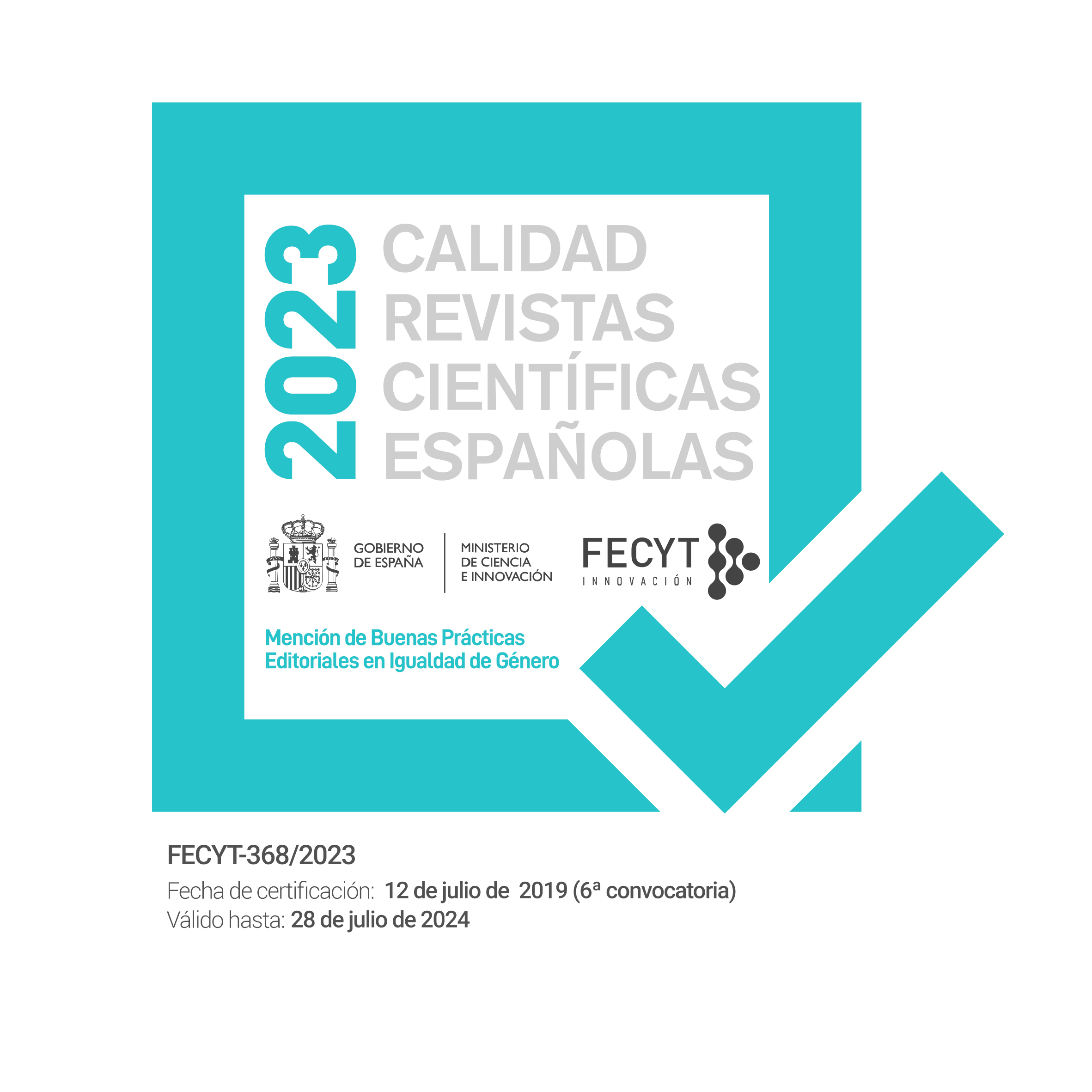Borders and cosmopolitanism in the global city: “London River”
DOI:
https://doi.org/10.18172/jes.3523Keywords:
Film studies, “London River”, cosmopolitanism, borders, borderlands, global citiesAbstract
This article explores the representation of borders and cosmopolitanism in the city of London in “London River”, a film about two parents looking for their children in global city after the 7th of July of 2005 terrorist attacks. As will be argued, different spaces in the city work simultaneously as dividing lines and as borderlands, emphasising the dual nature of borders theorized by border scholars such as Gloria Anzaldúa (1999), Mike Davis (2000) and Anthony Cooper and Christopher Rumford (2011). Elijah Anderson’s (2011) concept of cosmopolitan canopy and Gerard Delanty’s (2006) moments of openness will be used to analyse the articulation of cosmopolitanism in the different constructed spaces displayed in the film.
Downloads
References
Anderson, E. 2011. The Cosmopolitan Canopy: Race and Civility in Everyday Life. New York: W.W. Norton. 595.1: 14-31.
Anzaldúa, G. 1999 (1987). Borderlands/La Frontera: The New Mestiza. San Francisco, CA: Aunt Lute Books.
Barta, P. and P. Powrie. 2015. “Introduction: Being In-Between” In Bicultural Literature and Film in French and English, edited by Peter Barta and Phil Powrie. New York: Routledge.
Beck, U. 2001. “The cosmopolitan state.” Der Spiegel 15: 1-4.
Beck, U. 2002a. ‘The Cosmopolitan Perspective: Sociology of the Second Age of Modernity’, in S. Vertovec and R. Cohen, eds. Conceiving Cosmopolitanism – Theory, Context, Practice. Oxford: Oxford University Press.
Beck, U. 2002b. “The terrorist threat world risk society revisited.” Theory, culture & society 19 (4): 39-55.
Bouchareb, R., dir. 2009. London River. UK, France and Algeria: Cinema Libre Studios.
Brundson, C. 2007. London in Cinema: The Cinematic City Since 1945. London: British Film Institute.
Calhoun, C. 2003. “‘Belonging’ in the cosmopolitan imaginary.” Ethnicities 3 (4): 531-553.
Calhoun, C. 2008. “Cosmopolitanism and nationalism.” Nations and nationalism 14 (3): 427.
Cooper, A. and C. Rumford. 2011. “Cosmopolitan Borders: Bordering as Connectivity.” In The Ashgate Research Companion to Cosmopolitanism, edited by Maria Rovisco and Magdalena Nowicka. London: Ashgate. 261-276.
Cronenberg, D., dir. 2007. Eastern Promises. UK, Canada and USA: Focus Features.
Dabis, C., dir. 2009. Amreeka. USA, Canada and Kuwait: National Geographic, Entertainment and Imagination.
Davis, M. 2000. Magical Urbanism: Latinos Reinvent the U.S. City. London and New York: Verso.
Delanty, G. 2006. “The Cosmopolitan Imagination: Critical Cosmopolitanism and Social Theory.” The British Journal of Sociology 57 (1): 25-47.
Deleyto, C. 2016. “Looking from the Border: A Cosmopolitan Approach to Contemporary Cinema”. Transnational Cinemas. <http://www.tandfonline. com/doi/abs/10.1080/20403526.2016.1168117?journalCode=rtrc20>.
Deleyto, Celestino. 2015. “Women on the Border: A Cosmopolitan Approach to Representations of Femininity in It’s a Free World…” 21st Colloque de la SERCIA: Masculin/Feminin, Gender in English-language Cinema and Television, Universitéd’ Artois, Arras, France, 3-5 September.
Flynn, D. 2005. “New borders, new management: the dilemmas of modern immigration policies Ethnic and Racial Studies.” Ethnic and Racial Studies 28 (3): 463-490.
Foucault, M. 1971.The Order of Things. New York: Vintage Books.
Gritten, D. 2010. “London River: Why we Filmed in Finsbury Park.” The Telegraph, July 12. <http://www.telegraph.co.uk/culture/film/film-blog/7885464/London- River-why-we-filmed-in-Finsbury-Park.html>.
Kent, E. and T. Tomsky. 2017. Negative Cosmopolitanism: Cultures and Politics of World Citizenship after Globalization. Montreal & Kingston: McGill-Queen’s University Press.
Kramer, W., dir. 2009. Crossing Over. USA: The Weinstein Company.
Loach, K., dir. 2004. Ae Fond Kiss… UK, Germany, Spain and Italy: Icon Film Distribution.
Loach, K., dir. 2007. It´s a Free World… UK: Sixteen Films.
Massey, D. 2007. World City. London: Polity.
Mendes, A. C. and J. Sundholm. 2015. “Walls and Fortresses: Borderscapes and the Cinematic Imaginary.” Transnational Cinemas 6 (2): 117-122.
Miller, D. 2002. “Cosmopolitanism: a critique.” Critical Review of International Social and Political Philosophy 5 (3): 80-85.
Miller, D. 2007. National Responsibility and Global Justice. New York: Oxford University Press.
McIlwaine, Cathy. 2008. “The postcolonial practices of international migration: Latin American migration to London.” London: Department of Geography, Queen Mary, University of London.
McLoughlin, S. 2005. “Mosques and the public space: conflict and cooperation in Bradford.” Journal of Ethnic and Migration Studies 31.6: 1045-1066.
Minghella, A., dir. 2006. Breaking and Entering. UK and USA: Metro-Goldwyn-Mayer, The Weinstein Company (North America) and Miramax Films (International).
Nair, M., dir. 2012. The Reluctant Fundamentalist. USA, India and Qatar: The Mirabai Films, Doha Film Institute and Cine Mosaic.182
O’Regan, T. 1999. “Cultural Exchange”. A companion to film theory. Ed. T. Miller and R. Stam. Oxford: Blackwell. 262-294.
Rees P. and P. Boden. 2006. “Estimating London’s new migrant population: Stage 1 – review of methodology.” Greater London Authority, London. .
Rumford, C. 2008. “Introduction: Citizens and borderwork in Europe.” Space and Polity 12.1: 1-12.
Sassen, S. 2005. “The Global City: Introducing a Concept”. Brown Journal of World Affairs 11 (2): 27-43.
Shaw, D. 2013. “Deconstructing and Reconstructing ‘Transnational Cinema’.” Contemporary Hispanic Cinema: Interrogating the Transnational in Spanish and Latin American Film. Ed. by Stephanie Dennison. Woodbridge: Tamesis. 47-65.
Skrbis, Z., Kendall, G. and I. Woodward. 2004. “Locating Cosmopolitanism, Between Humanist Ideal and Grounded Social Category.” Theory, Culture & Society 21 (6): 115-146.
Smith, N. 2002. “New Globalism, New Urbanism: Gentrification as Global Urban Strategy.”Antipode 34(3): 427-50.
Spence, L. 2005. Country of birth and labour market outcomes in London: an analysis of labour force survey and census data. London: Greater London Authority.
Downloads
Published
How to Cite
Issue
Section
License
The authors retain copyright of articles and authorize Journal of English Studies the first publication. They are free to share, redistribute, and/or reprint the article without obtaining permission from the publisher as long as they give appropriate credit to the editor and the journal.
Self-archiving is allowed too. In fact, it is recommendable to deposit a PDF version of the paper in academic and/or institutional repositories.
It is recommended to include the DOI number.
This journal is licensed under a Creative Commons Attribution 4.0 International License









